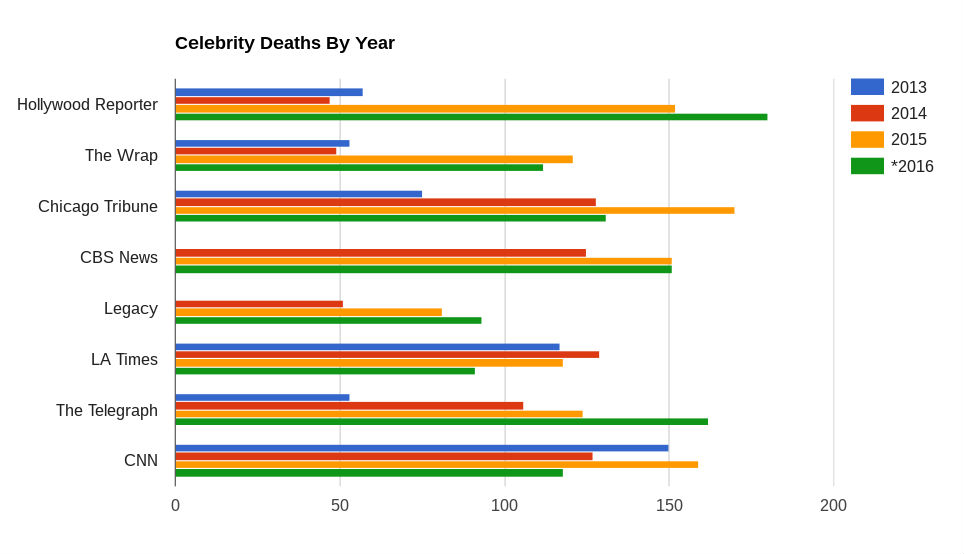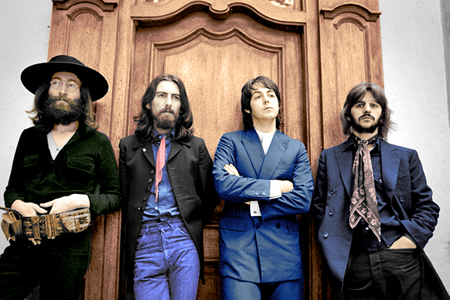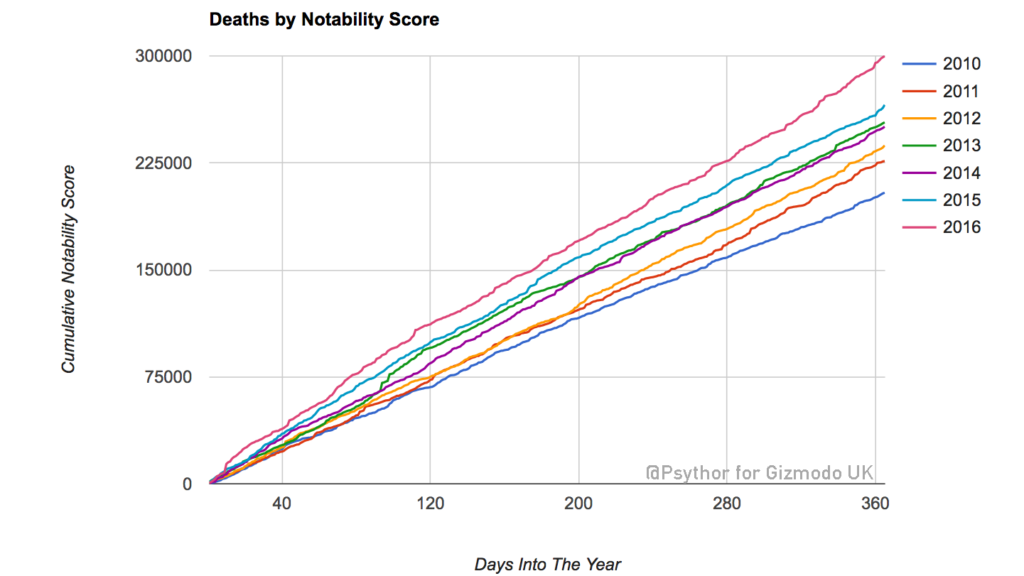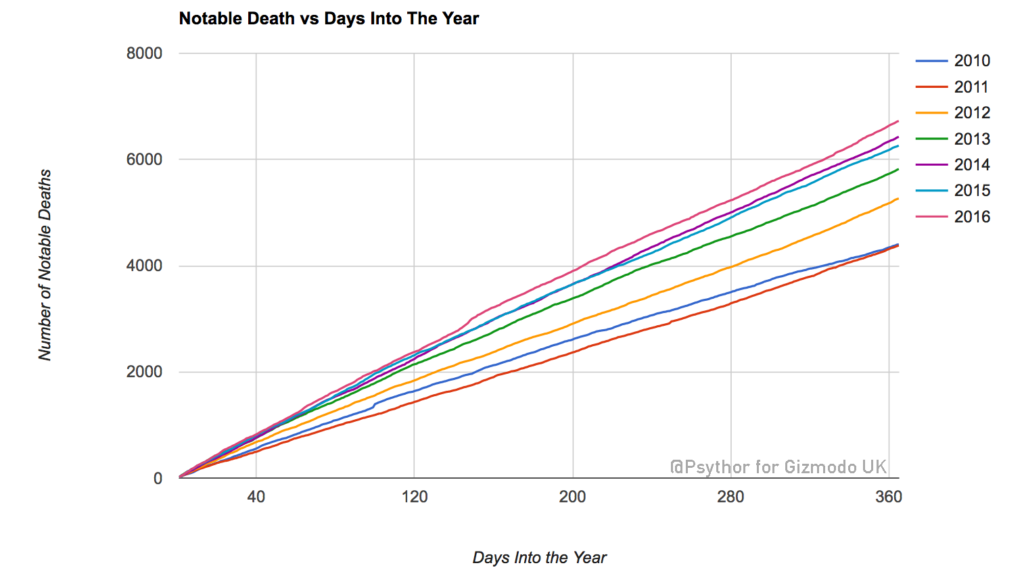
Was 2016 Really the Deadliest Year for Celebrities?


Graph from: https://timothyks.wordpress.com/
To begin with, there are obvious issues surrounding the definition of celebrity. The graph below indicates the number of celebrity deaths reported each year by 8 different media outlets. Three of these placed 2016 to in first place, while five did not. This serves as an example of the problems surrounding the perception of celebrities, by virtue of definition.
Graph from: http://www.snopes.com/2016/12/28/2016-the-deadliest-year-for-celebrities/
Despite the ambiguity surrounding definition, there is no doubt that there are now more celebrities than ever before. Of course this is not a new phenomenon, celebrity culture really took off in the 1960s and 1970s, where the public began to take great interest in the everyday lives of many individuals such as Elvis Presley, The Beatles and George Martin. As a result, it is simply a natural process that those who first found fame in that particular era are now coming to the end of their lives. Consequently, by virtue of more celebrities existing more will of course pass away. This aforementioned group of ‘original’ celebrities found fame during an era of TV being regarded as new and exciting, despite the paucity of channels. This resulted in a fairly limited space within which fame could be found. The current landscape is unrecognisable to the one in which the Beatles and co took off, following the decline of traditional media.

Graph from: http://www.gizmodo.co.uk/2017/01/2016-really-was-the-worst-year-for-famous-people-dying-heres-the-data-that-proves-it/
Above, you can see the cumulative notability score for all celebrities who passed away that year along the Y-axis. This displays the huge gap between 2016 and any other of the past six years. The collective fame of the celebrities who died in 2016 is considerably more than years gone by. Below you can see the number of celebrity (as ranked by Wikipedia) deaths in the past six years. 2016 was indeed the worst year for celebrity deaths, (by virtue of total number) but only by a small margin. The difference in impact on the public however was far greater than these numbers suggest, as the aforementioned cumulative notability scores demonstrate.
Graph from: http://www.gizmodo.co.uk/2017/01/2016-really-was-the-worst-year-for-famous-people-dying-heres-the-data-that-proves-it/
Of course there is no established measure for answering the question of whether 2016 really was the deadliest years for celebrities due to so many subjective concepts. Though many suggestions have been made – and only time will tell if celebrity deaths will now level out due to the increased number of them – it appears that Gizmodo came up with the most comprehensive explanation for the supposed outbreak. This highlights the power of data when combined with a degree of know-how and innovation. We're keen data-junkies at Mintwist, for obvious reasons. Data is the lifeblood of the SEO strategies, Paid Search campaigns and Content Strategies that we leverage for all of our clients. Want to see how we can make data work for you? Drop us a line.